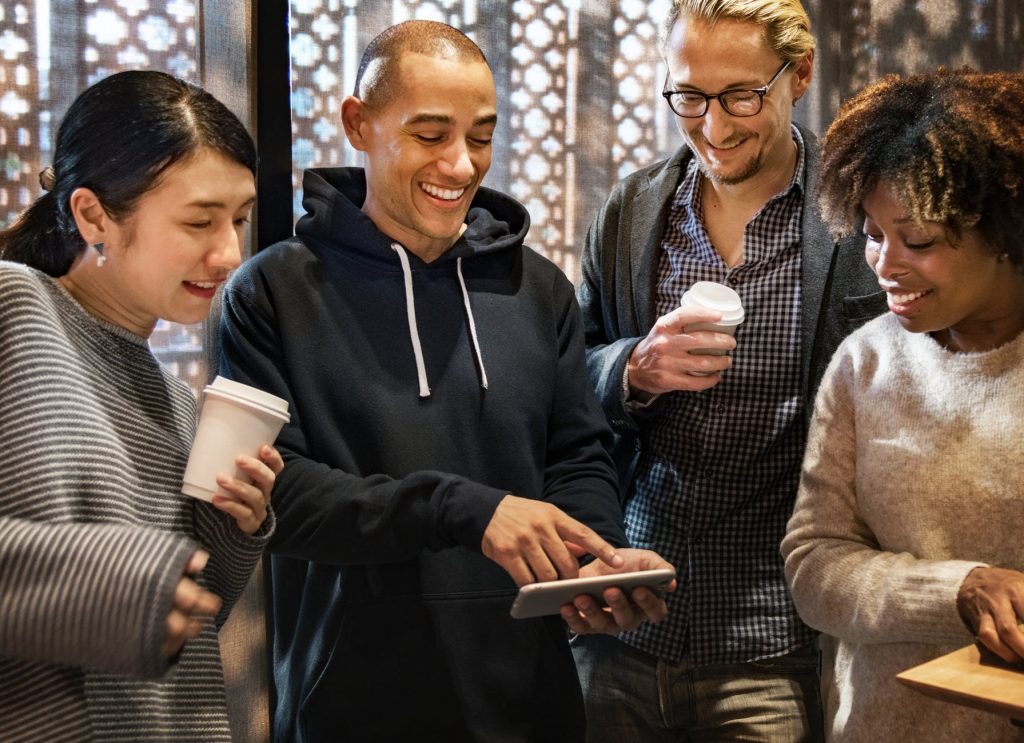Do you know the language of your face?


Many social and behavioural scientists and communication experts accept the idea that, as mammals, we humans do transmit and receive non-verbal messages. The underlying basis of this position is that if properly trained we can be able to decipher received body language messages. The validity and the reliability of this theory have not been properly established and tested but the idea is still worth thinking about in more detail. In this article, Dr Georgios P. Piperopoulos, professor of communications and public relations will analyse the use of ‘non-verbal communication’ among humans by focusing on our face. Don’t miss this.
What our smiles are all about
Erwin Goffman (1969) coined and introduced the interesting concept of ‘public smiles’. In all human cultures, in what appears to exist at a universal level, the human smile expresses a good sense of humour. It is also commonly accepted that our smile often involves elements of apology, especially in cases where some act or some verbal statement on our part could be interpreted as an attack or insult to the receiver. In such cases we smile and, obviously, we do politely apologize without uttering any relevant words. Finally, as most of us know from experience, there are instances in everyday life where we smile despite being angry, we smile despite feeling bitter, and we even proceed to swallow our disappointments with a smile.
Our face carries specific meanings
In body language our mouth and lips, eyebrows and eyes each alone, or operating in combined fashion, dramatize their own role in the process of our communication with others. Thus, pulling the lip or focusing on one area of the mouth carries specific meanings and so do specific movements of the eyebrows along with contractions of our forehead. Furthermore, although our eyeballs are only organs which carry light from visual stimuli through the optic nerve to the brain, in body language our eyes, with the help of the general area of the face around them, seem to be significant transmitters of specific and meaningful messages to others we are interacting with. This materializes and is conveyed through the intensity and persistence with which we look at the person or persons standing or sitting opposite to us.
The eyes as the mirror of the soul
It is already fairly well established, as a result of relevant psychological research, that when we see something delightful the pupils of our eyes dilate, apparently with the aim to collect as much as possible of the intensely pleasant stimulus, whereas when we see something unpleasant, the pupils of our eyes constrict minimizing the inflow of the unwanted stimulus. Indeed, it is a given in world literature that the human eyes are often presented as ‘the mirror of the soul’ and it is accepted that a specific look may reflect the feelings you are trying to convey to the person you are interacting with and vice versa. Our eyes can show that we stay aloof and cold to persons and situations, our glance may be shrilling or ironic, or it may reveal that we are full of understanding for what the person communicating with us is conveying.
What happens when our eyes are crossing other eyes
You may already have encountered, or will encounter in literature, references to eyes that are sunk in melancholy or others full of laughter and beaming, or eyes reflecting the fact that they are full of light. For the noted Spanish writer Jose Ortega Y Gasset (1957) the human eyes, in conjunction with eyelids and eyebrows, constitute a theatrical stage where dramas and comedies can be carried out. It would be worthwhile for you, the readers of this book, to take a moment to reflect and remember what happens when our eyes are crossing other eyes in enclosed spaces ranging from lecture halls to buses, trains, coffee-shops, restaurants and so on.
When asked by a researcher conducting relevant research, most persons would confess that when their eyes cross the eyes of another person they feel a bit of embarrassment and they avoid direct eye contact by raising their eyes to read the advertisements on the walls, lowering their eyes to read the textbook or the newspaper they hold or, if sitting in a café or restaurant, focusing their eyes in reading their menu again and again. In close encounters and such cases of eye-contact, what seems to follow, naturally, is a brief cross glance with the other persons and a hurried return to previous activities. Most people consciously will avoid being ‘pinned’ in the eyes of persons standing or sitting across them in enclosed spaces.
Certainly a look, a glance of its own, although it may carry a message, it cannot reveal and betray to others everything that we may be harbouring in our minds. Research findings indicate that a look, descriptive and full of meaning as it may be, resembles more of a word in a sentence rather than a full phrase or sentence. We need, no doubt, many more details beyond a glance to guess what happens in the mind of persons sitting or standing opposite us.
Learn more about our body language by downloading and reading the free eBook “Fundamentals of communication, P.R. and leadership” written by Georgios P. Piperopoulos.




